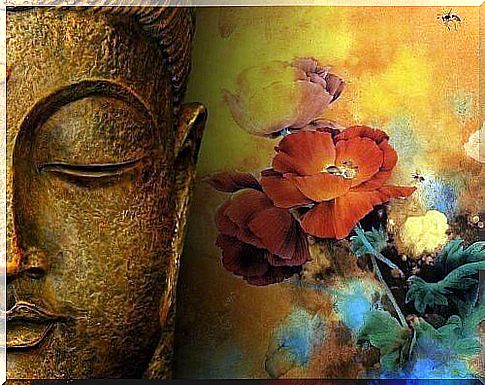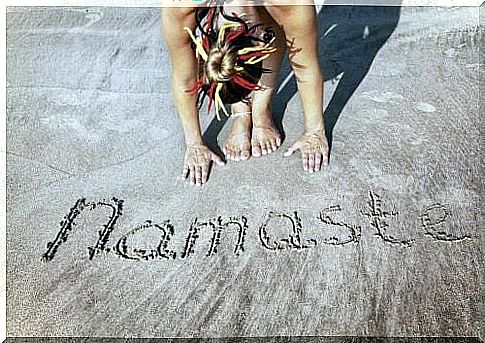What Does Namaste Mean?
The word

If you know traditional Indian techniques like yoga or meditation, you have probably heard the word “ Namaste ”.
This phrase has a deeply spiritual meaning that should be taken into account when pronouncing the word.
Origin of the word “Namaste”

“ Namaste ” is probably the most popular form of greeting and farewell in Indian culture. It comes from Sanskrit, the sacred language of Hinduism.
The word is accompanied by a characteristic gesture also known as “mudra”. It is a symbolic gesture to please God, used in everyday life, in religious practice and also in dance.
When pronouncing the word “Namaste”, the hands are folded and brought to the chest. It is a sign of respect for the interlocutor who is greeted or said goodbye.
The etymological meaning of the Sankritic word is derived from “namas” (a noun that means “greeting” or “bowing”) and “te” (for you).
Spirituality in Yoga Meditation

Meditation and yoga are traditional techniques that have many benefits, which have even been confirmed in scientific studies.
For example, it is about becoming aware of the present moment, passing all judgments, forgetting worries and other thoughts that disturb the mind.
In this way one can establish a connection to all things in which one’s ego dissolves.
In yoga and meditation techniques, the word “Namaste” is used to express humility and humility, not only in front of other people, but in front of the whole world and the universe …
Various experts who have analyzed the word “Namaste” in more detail have come to the conclusion that “namas” not only has the meaning already mentioned, but also symbolizes “nothing of me”.
It is the state in which we lose all meaning and at the same time are everything, a state in which we are connected to the world, but the ego could be appeased.
The mind finds calm and balance, you feel light and relaxed, almost as if you were in a trance.
Our divine essence

In the tradition in which the term “Namaste” originated, it is assumed that the divine essence resides in us and that we can discover it through these healing practices.
As soon as you reach this ideal state, in which you are calm and alert at the same time, you fold your hands together, bend your head forward and say the word “Namaste” to say thank you and show respect.
In this way the presence of the divine essence is expressed in yourself and also in all other people and things that surround you.
In Christianity we also know similar moments, for example when the believer makes a sign of the cross on his knees to express humility and respect for God.
The term “Namaste” can be addressed to a god, to the universe, or to other persons.
However, it is not only a sign of respect for others, but also for yourself. We are two divine essences who identify and greet each other with respect.
You now know what this word means, which is often superficially placed in the room. You can now use it consciously to promote your well-being while practicing yoga or meditation.
More and more people are becoming aware of the many benefits that a few minutes of silence and concentration can have. You can bring some calm and relaxation into the noisy world, which consists largely of responsibilities and hectic activities.
Constancy and awareness, as in the case of the expression “Namaste”, will help you to use yoga sessions and meditation techniques in a particularly beneficial way!
Cover picture kindly provided by © wikiHow.com









